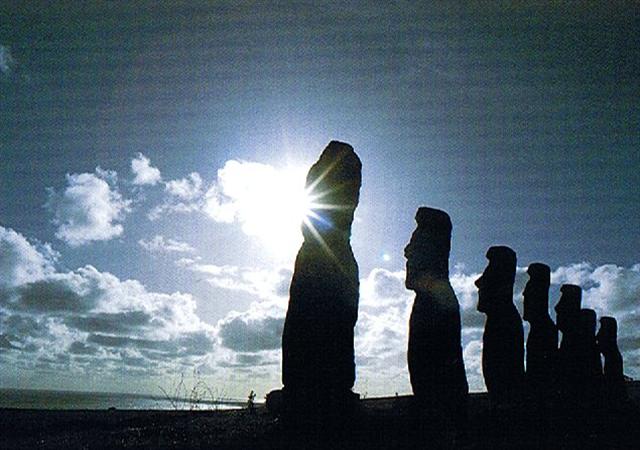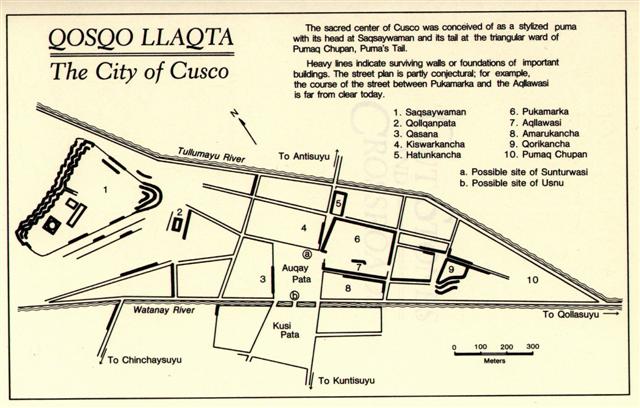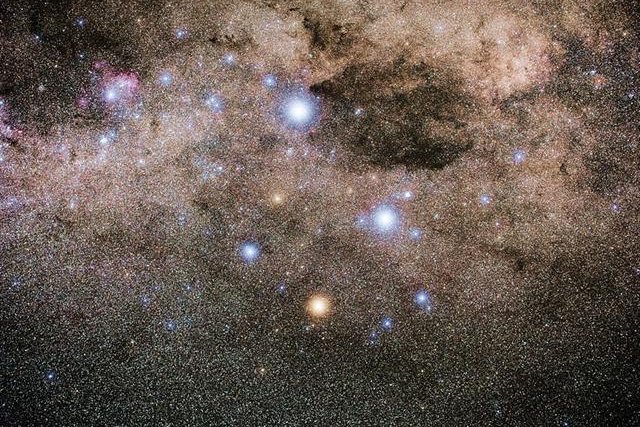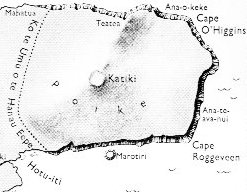When Hotu A Matua
asked for the stone statue (moai) of his ancestor
Oto Uta it was perhaps because he
needed him in order to help time to move
on past day 364, to once again begin the cycle of the
ariki motogi. The last of the 10 should
be followed by the first:
|
ko oto uta |
1 |
|
ko tangaroa.a oto uta |
2 |
|
ko tiki hati.a tangaroa |
3 |
|
ko roroi.a tiki hati |
4 |
|
ko tuu kumā.a roroi |
5 |
|
ko ataranga.a tuu kumā |
6 |
|
ko harai.a ataranga |
7 |
|
ko taana.a harai |
8 |
|
ko matua.a taana |
9 |
|
ko hotu.a matua |
10 |
|
|
1 Adam |
130 |
|
2 Seth |
105 |
|
3 Enoch |
90 |
|
4 Kenan |
70 |
|
5 Mahalel |
65 |
|
6 Jared |
162 |
|
7 Enoch |
65 |
|
8 Methuselah |
187 |
|
9 Lamech |
182 |
|
10 Noah: until Flood |
600 |
|
... When it
was evident
that the
years lay
ready to
burst into
life,
everyone
took hold of
them, so
that once
more would
start forth
- once again
- another
(period of)
fifty-two
years. Then
(the two
cycles)
might
proceed to
reach one
hundred and
four years.
It was
called 'One
Age' when
twice they
had made the
round, when
twice the
times of
binding the
years had
come
together. Behold
what was
done when
the years
were bound -
when was
reached the
time when
they were to
draw the new
fire, when
now its
count was
accomplished.
First they
put out
fires
everywhere
in the
country
round. And
the statues,
hewn in
either wood
or stone,
kept in each
man's home
and regarded
as gods,
were all
cast into
the water.
Also (were)
these (cast
away) - the
pestles and
the (three)
hearth
stones (upon
which
the cooking
pots
rested); and
everywhere
there was
much
sweeping -
there was
sweeping
very clear.
Rubbish was
thrown out;
none lay in
any of the
houses ...
Maybe he
wished to
make Oto
Uta
come alive
again:

...
On the
late
afternoon
of the
June
solstice,
towards
sunset,
we
reached
Ahu
Akivi
near the
centre
of the
western
side of
Easter
Island.
This is
an
inland
site, 3
kilometers
from the
coast.
Like
Ahu Nau
Nau
at
Anakena,
it has
seven
Moai,
but in
this
case
none of
them
have
topknots
and,
uniquely,
all face
west
towards
the sea
- which
is
clearly
visible
from the
high
point on
which
they
stand.
There is
a
curious
tradition
concerning
these
grizzled,
otherworldly
statues,
solemn
and
powerful,
with
their
blank,
aloof
eye-sockets
gazing
out over
the
limitless
ocean.
Like
most of
the
other
Moai
of
Easter
Island
the
local
belief
is that
they
died,
long
ago, at
the time
when
mana
- magic
-
supposedly
fled
from the
island
never to
return.
However,
in
common
with
only a
very few
of the
other
Moai,
it is
believed
that
these
particular
statues
still
have the
power,
twice a
year, to
transform
themselves
into
aringa
ora
-
literally
'living
faces' -
a
concept
startlingly
similar
to the
ancient
Egyptian
notion
that
statues
became
'living
images'
(sheshep
ankh)
after
undergoing
the
ceremony
of the
'opening
of the
mouth
and the
eyes'.
Statues
at
Angkor
were
likewise
considered
to be
lifeless
until
their
eyes had
been
symbolically
'opened'.
The
great
stone
Moai
of
Easter
Island
were at
one time
equipped
with
beautiful
inlaid
eyes of
white
coral
and red
scoria.
In a
number
of cases
- though
not at
Ahu
Akivi
-
sufficient
fragments
have
been
found to
make
restoration
possible,
showing
that the
figures
originally
gazed up
at an
angle
towards
the sky.
It is
therefore
easy to
guess
why this
island
was once
called
Mata-Ki-Te-Rani,
'Eyes
Looking
at
Heaven'
...
The basic
idea was
evidently to
make the
spirit of
life come to
the Land
through the
eyes of the
stone
statues. But
this was not
so easy as
if the Land
had been
close to the
equator. It was
a poor Land
and not even
Kuukuu
(Mars) was
able to lift
the dome of
the sky all
the way up.
The Earth
Turtle
struck him
down and
then returned into
the Sea.

At the time
of
rongorongo
this
happened 27
days before
heliacal Porrima -
the change
station
where some
went up,
some went
down, and
some
continued
unperturbed
straight
ahead:

... Men's
spirits were
thought to
dwell in the
Milky Way
between
incarnations.
This
conception
has been
handed down
as an Orphic
and
Pythagorean
tradition
fitting into
the frame of
the
migration of
the soul.
Macrobius,
who has
provided the
broadest
report on
the matter,
has it that
souls ascend
by way of
Capricorn,
and then, in
order to be
reborn,
descend
again
through the
'Gate of
Cancer'.
Macrobius
talks of
signs;
the
constellations
rising at
the
solstices in
his time
(and still
in ours)
were Gemini
and
Sagittarius:
the 'Gate of
Cancer'
means
Gemini. In
fact, he
states
explicitly
(I,12.5)
that this
'Gate' is
'where the
Zodiac and
the Milky
Way
intersect'. Far
away, the
Mangaians of
old (Austral
Islands,
Polynesia),
who kept the
precessional
clock
running
instead of
switching
over to
'signs',
claim that
only at the
evening of
the
solstitial
days can
spirits
enter
heaven, the
inhabitants
of the
northern
parts of the
island at
one
solstice,
the dwellers
in the south
at the other
...
|
JUNE
28 |
29
(180) |
SIRIUS |
JULY
1
(*102) |
|
"APRIL
28
(118) |
29 |
30 |
"MAY
1
(*41) |
 |
 |
 |
 |
|
Ga4-16 |
Ga4-17 |
Ga4-18
(101) |
Ga4-19 |
|
ν
Hydrae
(163.1) |
no
star
listed
(164)
ALTAIR
(α
Aquilae) |
Wings-27
η
Oct.
(165.4),
ALKES
= α
Crateris
(165.6) |
ANA-TIPU-4
(Upper-side-pillar
-
where
the
guards
stood)
MERAK
= β
Ursae
Majoris
(166.2),
DUBHE
= α
Ursae
Majoris
(166.7) |
|
August
31 |
September
1 |
2
(*165) |
3
(246) |
|
░August
27 |
28 |
29
(*161) |
30
(242) |
|
'August
4
(216) |
5
(*137) |
6 |
7 |
|
"July
21 |
22
/ 7
(=
π) |
Anakena
23 |
24
(*125) |
|
NAKSHATRA
DATES: |
|
DECEMBER
28
(362) |
29 |
30 |
31
(*285) |
|
"OCTOBER
28
(301) |
29
(*222) |
30 |
31 |
|
ι
Cephei
(346.0),
λ
Aquarii,
γ
Piscis
Austrini,
σ
Pegasi
(346.5) |
SCHEAT
AQUARII
= δ
Aquarii
(347.0),
ρ
Pegasi
(347.2),
δ
Piscis
Austrini
(347.4),
FOMALHAUT
=
α
Piscis
Austrini,
τ
Gruis
(347.8) |
FUM
AL
SAMAKAH
= β
Piscium
(348.3),
ζ
Gruis
(348.5),
ο
Andromedae
(348.9) |
Al
Fargh
al
Mukdim-24
/
Purva
Bhādrapadā-26
/
House-13
SCHEAT
PEGASI
= β
Pegasi,
π
Piscis
Austrini
(349.3),
κ
Gruis
(349.4),
MARKAB
PEGASI
= α
Pegasi
(349.5) |
|
March
2 |
3 |
4
(*348) |
5
(64) |
|
░February
26 |
27 |
28
(*344) |
░March
1
(60) |
|
'February
3 |
4 |
5
(36) |
6
(*322) |
|
"January
20
(385) |
21 |
22 |
23
(*308) |


|
JULY
2 |
3
(184) |
4
(*105) |
16 |
|
"MAY
2
(*42) |
3
(123) |
4 |
 |
 |
 |
|
Ga4-20 |
Ga4-21
(104) |
Ga4-22 |
|
11h
(167.4)
χ
Leonis,
χ╣
Hydrae
(167.1),
χ▓
Hydrae
(167.3) |
AL
SHARAS
(The
Rib)
= β
Crateris
(168.6) |
Al
Zubrah-9
/
Purva
Phalguni-11
ZOSMA
(Girdle)
= δ
Leonis
(169.2),
COXA
(Hips)
= θ
Leonis
(169.4) |
|
September
4 |
5
(248
=
104
+
144) |
6 |
|
░August
31 |
░September
1
(*164) |
2
(245) |
|
'August
8
(*140) |
9 |
10
(222) |
|
"July
25
(*126) |
26 |
27
(208) |
|
NAKSHATRA
DATES: |
|
JANUARY
1
(*286) |
2 |
3
(368) |
|
"NOVEMBER
1
(*225) |
2
(306) |
3 |
|
23h
(350.0)
υ, θ
Gruis
(350.0),
π
Cephei
(350.6),
ι
Gruis
(350.9) |
SIMMAH
= γ
Piscium
(351.7) |
φ
Aquarii
(352.0),
ψ
Aquarii
(352.4),
χ
Aquarii
(352.6),
γ
Tucanae,
φ
Gruis
(352.8) |
|
March
6
(*350) |
7
(66) |
8
(432) |
|
░March
2
(*346) |
3 |
4
(63) |
|
'February
7 |
8
(*324) |
9
(40) |
|
"January
24 |
25
(*310) |
26 |
|
JULY
21 |
7-22
(*123) |
23 |
24 |
25
(206) |
|
"MAY 21
(*61) |
22 |
23 |
24 |
25
(145) |
 |
 |
 |
 |
 |
|
Ga5-12 |
Ga5-13
(123) |
Ga5-14 |
Ga5-15 |
Ga5-16 |
|
CHANG
SHA
(Long
Sand-bank)
= ζ
Corvi
(186.3) |
INTROMETIDA
= ε
Crucis
(187.4),
ACRUX
= α
Crucis
(187.5) |
γ
Com.
Berenicis
(188.0),
σ
Centauri
(188.1),
ALGORAB
= δ
Corvi
(188.5),
GACRUX
= γ
Crucis
(188.7)
|
γ
Muscae
(189.0),
AVIS
SATYRA
= η
Corvi
(189.3),
ASTERION
= β
Canum
Ven.
(189.5),
KRAZ
= β
Corvi,
κ
Draconis
(189.7) |
α
MUSCAE
(190.2),
τ
Centauri
(190.5),
χ
Virginis
(190.7)
ALDERAMIN
(α
Cephei) |
|
September
23 |
24
(*187) |
25
(268) |
26 |
27 |
|
░September
19 |
20
(*183) |
21
(264) |
EQUINOX |
23 |
|
'August
27 |
28
(240) |
29
(*161) |
30 |
31 |
|
"August
13 |
14
(*146) |
15
(227) |
16 |
17 |
|
NAKSHATRA
DATES: |
|
JANUARY
20 |
21
(*306) |
22 |
23
(388) |
24 |
|
"NOVEMBER 20
|
21
(*245) |
22 |
23
(327) |
27 |
|
no
star
listed
(4) |
ANKAA
= α
Phoenicis,
κ
Phoenicis
(5.0)
ALPHARD
(α
Hydrae) |
λ
Phoenicis
(6.3),
β
Tucanae
(6.4) |
ANDROMEDA
GALAXY
(M31),
π
Andromedae
(7.7) |
ε
Andromedae
(8.2),
DELTA
= δ
Andromedae
(8.4),
SCHEDIR
= α
Cassiopeiae
(8.6),
ζ
Andromedae,
μ
Phoenicis
(8.9) |
|
March
25
(84) |
26 |
27 |
28
(*372) |
29
(*8) |
|
0h |
░March
22 |
23 |
24
(*368) |
25
(*4) |
|
'February
26 |
27 |
28
(59) |
'March
1 |
2
(*346) |
|
"February
12 |
13
(*329) |
2-14
(45) |
15 |
16 |

| JULY 26 |
27 (208) |
28 |
29 |
30 (*131) |
| "MAY 26 (*66) |
27 |
28 (148) |
29 |
30 |
 |
 |
 |
 |
 |
| Ga5-17 |
Ga5-18 (128) |
Ga5-19 |
Ga5-20 |
Ga5-21 |
| Al ┴wwā'-11 / Shur-mahrū-shirū-18 (Front or West Shur?)
Sombrero Galaxy = M104 Virginis (191.1), ρ Virginis (191.4), PORRIMA = γ Virginis, γ Centauri (191.5) |
ι Crucis (192.2), β Muscae (192.5), MIMOSA = β Crucis (192.9) |
no star listed (193) |
κ Crucis (194.4), ψ Virginis (194.5), μ Crucis, λ Crucis (194.6), ALIOTH (Fat Tail) = ε Ursae Majoris, ι Oct. (194.8) |
MINELAUVA = δ Virginis (195.1), COR CAROLI = α Canum Ven. (195.3) |
| September 28 |
29 (*192) |
30 (273) |
October 1 |
2 |
| ░September 24 |
25 (*188) |
26 |
27 (270) |
28 |
| 'September 1 |
2 (*165) |
3 |
4 |
5 (248) |
| "August 18 (*150) |
19 (231) |
Hora Iti 20 |
21 |
22 |
| NAKSHATRA DATES: |
| JANUARY 25 |
26 |
27 (392) |
28 |
29 (*314) |
| "NOVEMBER 25 (329) |
26 (*250) |
27 |
28 |
29 |
| ξ Phoenicis (9.0), ρ Tucanae (9.1), DENEB KAITOS = β Ceti, η Phoenicis (9.4), AL NITHĀM = φ╣ Ceti (9.6) |
ACHIRD = η Cassiopeiae (10.7) |
Legs-15
ν Andromedae (11.0), φ▓ Ceti (11.1), ρ Phoenicis (11.2), η Andromedae (11.4) |
CIH (Whip) = γ Cassiopeiae, λ Tucanae (12.4), φ│ Ceti (12.6), μ Andromedae (12.8) |
φ4 Ceti (13.2) |
| March 30 |
31 (*375) |
April 1 (91) |
2 |
3 |
| ░March 26 |
27 |
28 (*372) |
29 (88) |
30 |
| 'March 3 |
4 |
5 (64) |
6 (*350) |
7 |
| "February 17 |
18 |
19 (50) |
20 (*336) |
21 |
There were
26 days from
Alkes to
Porrima and
here it was
possible to
explain and
memorize the
basic
principle of
the
precession -
that the
fixed stars moved
ahead in the
Sun year with
1 precessional
day in around 26000
/ 366 = 71
years. There
were
approximately
26
precessional
days down to
Roman times,
26 * 71 =
1846.
The neck
(the
earliest
part) of
Oto Uta
was broken - like
the spine of
Kuukuu
- and moreover
the sacred
geography of
Easter
Island
- which in a
way
was
the Earth
Turtle - also
seemed to illustrate
this fact:

... The name
in the
sacred
geography of
Easter
Island was
Ko te Umu
o te Hanau
Eepe
(The Oven of
the
'Long-ears'),
and it
stretches
across the
neck of the
high
peninsula in
the east (Poike).
Somewhere in
The
Eighth
Island
is mentioned
that this
part of the
island was
named 'the
neck of the
turtle'. It
makes sense
if we think
of the
turtle as
the 'earth
turtle' of
Easter
Island. The
high
Poike in
the east
will then be
the head of
the land and
the line of
fire across
the neck
could
represent a
noose with
which the
turtle is
caught
...
... According to Leonardo Pakarati, 'the
neck of the turtle' was the birthplace of
the youngest son, Tuu Hotu Iti
...
|
HOW
THE
SHORT-EARS
CONQUERED
THE
LONG-EARS
The
Long-ear
people
were
strong,
they
ruled.
They
lived
out
there
on
Poike,
the
headland,
where
the
ground
is
not
covered
with
heavy
stones.
They
stretched
their
ears
with
ornaments,
those
people,
they
made
them
long.
The
Short-ears
lived
on
poor
land
that
has
many
stones.
The
Long-ears
wished
to
build
more
ahus
near
the
shore,
more
ahus
for
the
gods.
They
said
to
the
Short-ears,
'Come
and
carry
stones
with
us
to
the
place
for
the
ahus,
this
will
make
your
ground
clean.'
The
Short-ears
would
not
do
it.
They
were
afraid
that
the
Long-ears
would
take
their
land
when
it
was
made
cleaner.
'We
do
not
want
to
carry
the
heavy
stones.
Leave
them
on
the
ground
for
our
food
plants,
to
make
them
suffer
-
for
the
kumara,
the
banana
trees,
the
sugar-canes,
to
make
them
suffer
and
grow.'
The
Short-ears
would
not
work
for
the
Long-ears,
they
did
not
carry
them,
they
left
the
stones.
The
Long-ears
carried
all
the
stones
to
build
their
ahus,
angry
with
the
Short-ears.
They
built
their
ahus.
They
also
thought
evil
against
the
Short-ears.
They
dug
their
long
pit
like
an
oven.
They
dug
it,
they
brought
firewood,
they
strewed
the
whole
pit
with
firewood.
The
Short-ears
did
not
know
for
whom
the
Long-ears
were
making
that
oven.
There
was
a
woman
of
the
Short-ears
who
had
a
husband
of
the
Long-ear
people.
She
lived
at
Potu
te
rangi,
that
was
where
she
had
her
house,
at
that
end
of
the
Long-ears'
pit.
One
day
her
husband
in
anger
said
to
her:
'This
pit
that
is
being
dug
is
for
all
you
Short-ears!'
He
went
away
angry;
left
that
woman.
Then
that
woman
knew,
knew
for
whom
the
pit
was
made.
She
waited.
At
night
she
went
to
her
people,
went
to
the
Short-ears
and
told
them:
'Watch
my
house.
Watch
it
for
the
sign
that
I
shall
give.
On
the
day
after
tomorrow
the
Long-ears
are
to
light
the
oven
for
your
corpses.
Form
yourselves
into
a
line,
make
everybody
join
in,
come
there,
make
a
circle
round
the
Long-ears,
round
their
land
of
Poike.
Start
killing
them.
Throw
them
into
the
pit,
change
that
oven
to
your
own
and
cook
the
Long-ears
for
yourselves.'
Before
the
dawn
that
woman
went
back
to
her
house
at
Potu
te
rangi.
She
said
to
her
people,
'Be
quick
and
do.'
Then
she
went
to
her
house
and
stayed
there,
plaiting
a
basket
in
the
doorway.
She
was
plaiting
a
basket
with
her
eyes
on
the
Long-ear
men.
They
were
filling
their
oven
with
firewood.
When
it
was
sunset
the
Short-ears
gathered.
It
was
already
dark;
they
gathered,
they
came;
the
first
men
hid
in
the
house
of
the
woman
who
was
plaiting
the
basket.
The
rest
concealed
themselves
behind,
they
formed
a
line,
they
waited.
The
woman
who
was
plaiting
told
them
where
the
Long-ears
were.
They
were
in
their
houses.
Therefore
the
Short-ears
went
around
Kikiriroa
and
Mount
Teatea.
They
drew
up
all
in
order,
they
marched
in
the
night,
they
came
down
to
the
point
of
Mahatua.
They
remained
there,
they
slept,
they
hid
themselves.
And
at
the
first
light
all
those
Short-ears
rose
up,
they
rushed
out
with
their
spears
and
suprised
the
Long-ear
people,
they
were
all
still
resting
in
their
houses.
They
rushed
and
chased,
those
Short-ear
men,
they
chased
the
Long-ears
out.
They
made
them
all
run
to
the
ditch
which
they
had
dug
themselves.
They
lit
the
fires.
When
the
Short-ears
rushed
upon
them
the
Long-ears
dashed
out
of
their
houses,
they
all
ran
away,
they
ran
toward
the
ovens.
No
other
way
could
the
Long-ears
run,
the
Short-ears
were
behind
and
all
around
them.
All
the
wives,
all
the
children
of
the
Long-ears
ran,
they
rushed
toward
the
pit.
The
men,
the
women
and
the
children
arrived
at
the
pit,
stopped
there.
They
were
afraid
of
the
flames.
The
war-party
of
the
Short-ears
came
behind
them
with
their
spears.
Which
way
could
the
Long-ears
escape
from
the
heat
of
the
fire?
There
was
no
way.
The
war
party
of
the
Short-ears
came
on,
they
yelled
at
the
Long-ear
people.
Then
all
the
Long-ears
began
jumping
into
their
earth-oven,
jumping
into
the
flames.
In
the
flames
they
jumped,
they
went
on
jumping.
Their
hair
was
burning,
the
Long-ears
went
on
jumping.
The
men,
women
and
children
-
all
were
burned.
Two
of
the
Long-ear
people
stepped
over
the
bodies;
these
two
men
jumped
and
fled
across
the
land.
The
Short-ears
went
round
the
pit
and
chased
them.
All
the
way
to
Anakena
they
chased.
They
arrived
at
Anakena,
those
two
Long-ears,
they
ran
into
Anavai
-
the
cave
that
has
fresh
water.
They
hid
themselves
in
the
darkness
there.
The
Short-ears
brought
a
long
stick
and
they
poked
it
at
those
Long-ears
hidden
in
the
cave,
poked
and
poked.
The
Long-ears
became
mad,
they
showed
their
faces
and
jabbered:
'Ororoin,
Ororoin.'
It
was
finished.
One
of
those
two
died.
The
other
lived,
came
out;
he
jabbered.
Said
one
of
the
Short-ears
to
the
chiefs:
'Important
men,
let
us
spare
this
man
who
is
now
alone.
Why
kill
this
person?
Leave
him.'
The
war
party
returned
to
Potu
te
rangi,
they
looked
at
their
oven
to
see
whether
any
of
the
Long-ears
were
still
living.
None
remained.
All
of
those
people
were
dead.
The
Short-ears
took
as
much
as
they
wanted;
then
they
covered
them
with
earth.
They
returned
to
their
homes.
He
remained,
than
one
man
of
the
Long-ear
people.
He
joined
the
other
people
and
lived
at
Turtle
Bay.
He
took
a
wife
and
made
children.
He
was
the
jabbering
man
of
whom
they
said
'Ka
hakarere
mahaki
etahi'
-
'Let
us
spare
this
one
man
only.'
I
know
an
old
man
called
Arone
arapu;
a
man
of
the
blood
of
the
Long-ears.
The
war
was
in
the
time
of
Hotu
matua's
children.
There
are
today
two
men
alive
who
are
of
that
blood;
one
lives
at
Hangaroa
and
one
is
where
the
lepers
are
kept;
children
of
the
blood
of
the
Long-ears. |
... It
should be
stated right
now that
fire
is
actually a
great circle
reaching
from the
North Pole
of the
celestial
sphere to
its South
Pole
...

... Take the
lower part
of a gourd
or hula
drum,
rounded as a
wheel
(globe), on
which
several
lines are to
be marked
and burned
in, as
described
hereafter.
These lines
are called
na alanui
o na hoku
hookele,
the highways
of the
navigation
stars, which
stars are
also called
na hoku
ai-aina,
the stars
which rule
the land.
Stars lying
outside
these three
lines are
called na
hoku a ka
lewa,
foreign,
strange, or
outside
stars.
The first
line is
drawn from
Hoku-paa,
the fixed or
North Star,
to the most
southerly
star of
Newe,
the Southern
Cross ...
The portion
(of the sky)
to the right
or east of
this line
... is
called ke
ala ula a
Kane,
the dawning
or bright
road of
Kane,
and that to
the left or
west is
called ke
alanui maawe
ula a
Kanaloa,
the
much-traveled
highway of
Kanaloa
...
Then three
lines are
drawn east
and west,
one across
the northern
section
indicates
the northern
limit of the
Sun
(corresponding
with the
Tropic of
Cancer)
about the
15th and
16th days of
the month
Kaulua
... and is
called ke
alanui
polohiwa a
Kane,
the
black-shining
road of
Kane.
The line
across the
southern
section
indicates
the southern
limit of the
Sun about
the 15th or
16th days of
the month
Hilinama
... and is
called ke
alanui
polohiwa a
Kanaloa,
the
black-shining
road of
Kanaloa.
The line
exactly
around the
middle of
the sphere
is called
ke alanui a
ke ku'uku'u,
the road of
the spider,
and also
ke alanui i
ka Piko a
Wakea,
the way to
the navel of
Wakea
(the
Sky-father)
...
|















